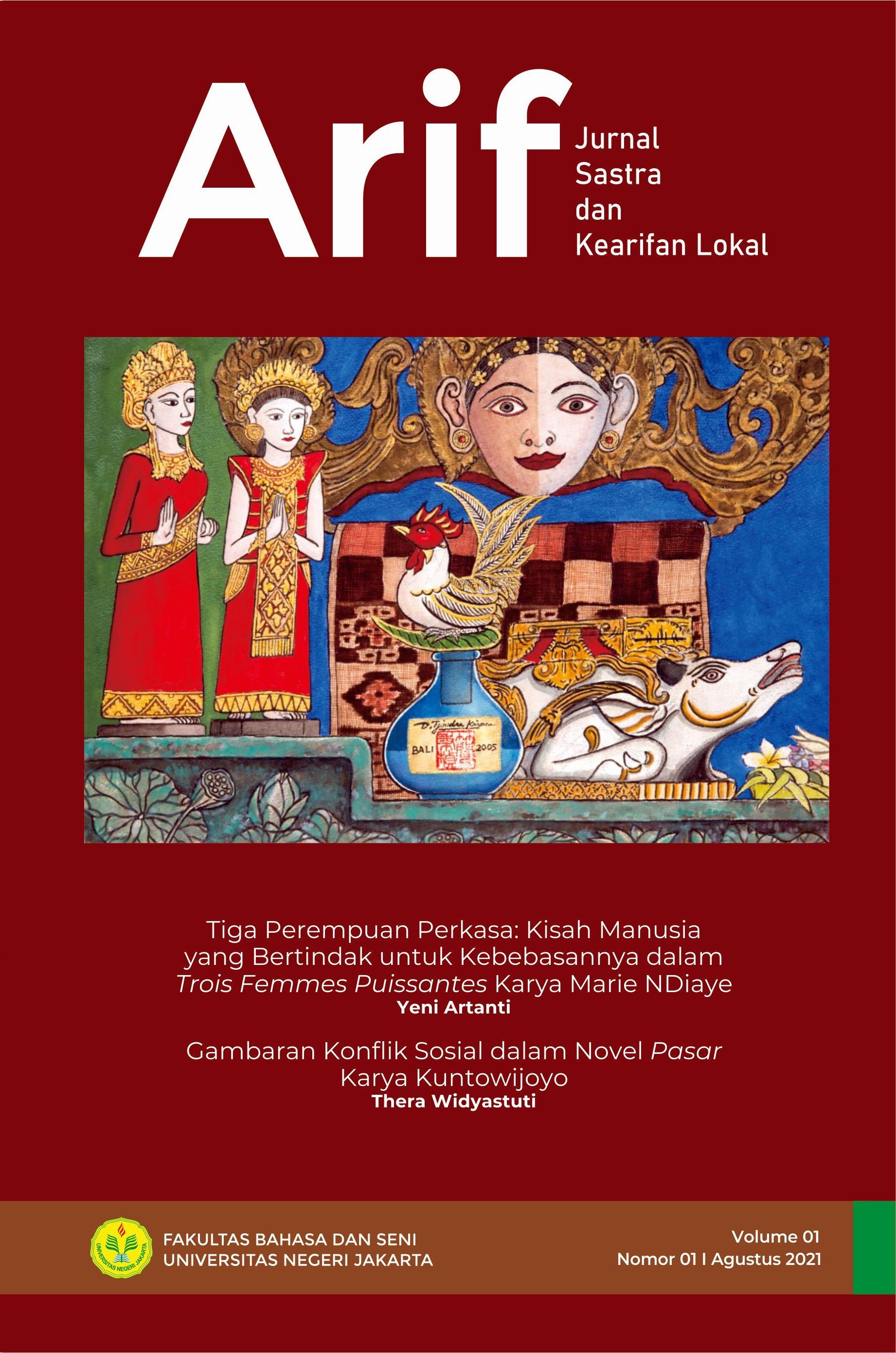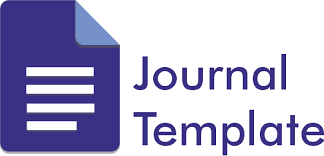Janger Performance: The Rite of Unification and (Re)construction of Cultural Identity of Banyuwangi, East Java
Abstract
Artikel ini membahas bagaimana masyarakat Banyuwangi, yang terdiri atas berbagai suku, menyatukan diri dan merekonstruksi identitas budaya mereka melalui seni pertunjukan Janger. Konstruksi identitas merupakan cara pandang atau makna identitas yang dikonstruksi oleh masyarakat. Mereka pernah mengalami keruntuhan identitas budaya ketika kalah total dalam perang besar melawan Belanda pada tahun 1772. Sebelum perang, mereka memiliki pemerintahan yang independen, tidak di bawah kendali pihak lain. Dalam beberapa dekade terakhir, ada upaya untuk merekonstruksi identitas budaya yang runtuh tersebut. Penelitian ini membutuhkan eksplorasi lapangan dengan memanfaatkan pendekatan etnografi. Pendekatan ini menggali data tentang berbagai aspek sosial budaya masyarakat Banyuwangi yang menjadi konteks seni pertunjukan Janger. Hasil penelitian menunjukkan bahwa Janger Banyuwangi menjadi momentum vital untuk membangun dan merekonstruksi budaya baru Banyuwangi yang dapat diterima semua lapisan masyarakat.
References
Abdullah, I. (2006). Konstruksi dan Rekonstruksi Kebudayaan. Yogyakarta: Pustaka Pelajar.
Anshori, D. (2016). Konstruksi Identitas Budaya Keindonesiaan dalam Wacana Buku Teks Sekolah Dasar. Jurnal Pendidikan Bahasa dan Sastra, 16(2).
Arps, B. (2009). Osing Kids and the Banners of Blambangan: Ethnolinguistic Identity and the Regional Past as Ambient Themes in an East Javanese Town. Wacana, 11(1).
Ben-Amos, D. (1992). Do We Need Ideal Types (in Folklore)?: An Address to Lauri Honko. Turku: Nordic Institute of Folklore.
Creswell, J. (2013). Qualitative Inquiry and Research Design, Choosing Among Five Traditions. Thousand Oaks: Sage Publication.
Dwyer, L., Gill, A., & Seetaram, N. (2012). Handbook of research methods in tourism: Quantitative and qualitative approaches. Handbook of Research Methods in Tourism: Quantitative and Qualitative Approaches. https://doi.org/10.4337/9781781001295.
Eriksen, T. H. (1993). Ethnicity and Nationalism: Anthropological Perspectives (Second edi). London, Sterling, Virginia: Pluto Press.
Escudero, C. (2018). Today is party day: the construction of the social and cultural identities of the immigrant in the celebrations of the origins. Intercom - RBCC São Paulo, 41(3), 1–14.
Hall, S. (2012). Introduction: Who Needs ‘Identity’? In Questions of Cultural Identity. https://doi.org/10.4135/9781446221907.n1.
Hartl, E., & Hess, T. (2017). The role of cultural values for digital transformation: Insights from a delphi study. In AMCIS 2017 - America’s Conference on Information Systems: A Tradition of Innovation.
Hongladarom, S. (2019). Identity, Liberty and Responsibility. Bangkok: Riposte.
Ilham, M. (2015). Kelir Mancawarna: Strategi Kelisanan Seni Pertunjukan Janger Banyuwangi. Program Pascasarjana Universitas Gadjah Mada.
Karjalainen, H. (2020). Cultural identity and its impact on today’s multicultural organizations. International Journal of Cross Cultural Management, 20(2), 249–262.
KBBI. (2016). Kamus Besar Bahasa Indonesia. Edisi Kelima. https://kbbi.kemdikbud.go.id/Beranda.Versi Daring
Khotimah, S. K. (2017). Konstruksi Identitas Kultural “Wong Ngapak” Melalui Konsumsi Media Dialek Banyumasan. Studi Budaya Nusantara, 1(2).
Kupiainen, J. (2016). Digital visuality in cultural identity construction: Notes from the festival of pacific arts. Journal de La Societe Des Oceanistes. https://doi.org/10.4000/jso.7605.
Lengel, L., & Holdsworth, H. (2015). Enacting Social Change Along the Cultural Identity Spectrum: Intercultural Identity Construction in Faith-Based Community Organizations. Journal of International and Intercultural Communication. https://doi.org/10.1080/17513057.2015.1057915.
Liliweri, A. (2002). Makna Budaya dalam Komunikasi antar Budaya. Yogyakarta: PT. LKiS Pelangi Aksara.
Luyckx, K., Schwartz, S. J., Goossens, L., Beyers, W., & Missotten, L. (2011). Handbook of Identity Theory and Research: Processes of Personal Identity Formation and Evaluation. Identity.
Mubah, A. S. (2011). Revitalisasi Identitas Kultural Indonesia di Tengah Homogenisasi Global. Global & Strategis, Special Is.
Orr, L. (1997). Media and Identities Series. California: SAGE.
Parani, J. L. (2003). National Culture and Ethnic Cultures: Government Policy and Performing Arts in 20th Century Indonesia. National University of Singapore.
Pavis, P. (1992). Theatre at the Crossroads of Culture. London and New York: Routledge.
Pelto, P. J., & Pelto, G. H. (1978). Anthropological Research: The Structure of Inquiry. Cambridge: Cambridge University Press.
Raffles, S. T. S. (2008). The History of Java. Yogyakarta: Narasi.
Spradley, J. P. (1997). Metode Etnografi, terj. Misbach Zulfa Elizabeth. Yogyakarta: Tiara Wacana.
Suparlan, P. (2005). Etnis Bangsa dan Hubungan antar Etnis Bangsa. Jakarta: YPKIK.
Tempelman, S. (1999). Constructions of Cultural Identity: Multiculturalism and Exclusion. Political Studies, 47, 17–31.
Ting-Toomey, S. (1999). Communicating Across Cultures. New York: The Guilford Publications, Inc.
Wexler, L. (2009). The Importance of Identity, History, and Culture in the Wellbeing of Indigenous Youth. The Journal of the History of Childhood and Youth, 2(2), 267–276. https://doi.org/10.1353/hcy.0.0055.









